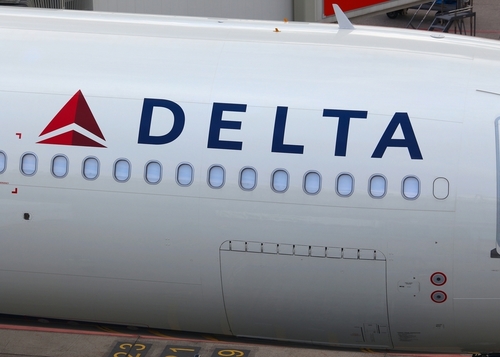The writer, a Los Angeles freelancer and former Detroit News business reporter. He blogs at StarkmanApproved.com.
By Eric Starkman

Bill Ford (company photo)
As far as silver spoon-born billionaires go, Bill Ford has always struck me as a stand-up guy. In addition to being committed to Detroit, I perceived him as caring deeply about the company that bears his family name.
Sadly, picking competent CEOs isn’t one of the Ford family's strong suits. Save for Alan Mulally, who spared Ford from bankruptcy, the automaker has been saddled with a steady string of CEO duds, and the weakest one yet is currently running the place. It’s my hope the Ford family cuts their losses with Jim Farley before the company reaches the point of no return, which it possibly already has.
Executive board chair Bill Ford, who received $17.3 million in compensation last year, made national news on Monday with his plea to the UAW to settle their strikes, which now includes Ford’s most lucrative truck plant in Indiana. Farley and the clueless PR people advising him have routinely been trashing the UAW, questioning their motives and suggesting union president Shawn Fain doesn’t have the best interests of his members at heart.
There’s lots to criticize about Fain, but it’s undeniable that his “audacious” representation of his members is heartfelt and that he cares deeply about improving their economic prospects.
In his plea to the UAW, Bill Ford took a different tact. He said the UAW should be focused on defending America’s manufacturing jobs against Chinese companies and other foreign competitors.
“A strong manufacturing base is critical to our national security. Building things in America matters now more than ever, especially in these uncertain times. We cannot take that for granted,” Ford said.
“The UAW’s leaders have called us the enemy in these negotiations," Ford said. “But I will never consider our employees as enemies. This should not be Ford versus the UAW. It should be Ford and the UAW vs. Toyota and Honda, Tesla, and all the Chinese companies that want to enter our home market. Toyota, Honda, Tesla and others are loving this strike because they know the longer it goes on, the better it is for them. They will win and all of us will lose.”

UAW President Shawn Fain
It takes real chutzpa for Ford to be declaring themselves as being “all-in on America,” as Chris Smith, Ford’s chief lobbyist, recently told the Wall Street Journal. It’s true that Ford employs more UAW plant workers than GM and Stellantis – 57,000 for Ford, compared with GM’s 46,000 UAW workers and Stellantis’ 43,000 union workers – but Ford has been steadily moving high paying white collar and factory jobs to Mexico and India. The trend is likely to accelerate.
CNBC previously reported only 49 percent of Ford’s global workforce of 186,769 employees were in the U.S. at the end of 2021.
Expansion in Mexico
In addition to building the Bronco Sport in Mexico, Ford proudly manufactures its electric Mustang Mach-E and its Maverick pickup south of the border.
Ford last year opened an expansive campus outside Mexico City to serve as the company’s “new global technology and business center,” reportedly the largest engineering complex in Latin America.
The trade publication Ford Authority previously reported that Ford’s engineering operations in Mexico experienced a 900 percent growth in personnel from 2010-2022. The publication said Mexican engineers were “significantly involved” with the Ford Bronco Sport, with Ford saying that over 70 percent of its engineering took place in Mexico. Nine Mexican engineers worked on instrument panels for the 2022 Ford Expedition and 2022 Ford F-150 Lightning, Ford Authority reported.
“Ford Mexico’s Engineering Center has evolved so much in recent years that we have become a fundamental arm for the company’s global projects,” Marcos Pérez, director Product Development at Ford of Mexico, was quoted by Ford Authority. “For many years, we thought that Mexican talent was mainly related to manufacturing, but today, we have shown that we are equally or more valuable (emphasis mine) than the design engineers in countries like Germany, Australia or the United States.”
In September 2021, Ford announced it planned to “significantly expand” its 11,000-employee Business Solutions team in India in coming years to support Ford globally. Ford said its India-based team would focus on “engineering, technology, and business operations centers of excellence.”

Stellantis CEO Carlos Tavares
Thanks to the Inflation Reduction Act, which allows for electric vehicles manufactured in Mexico and sold in the U.S to qualify for lucrative tax breaks, rest assured Ford plans to build more EVs in Mexico. I’m not certain what Ford pays its Mexican workers, but the top pay for GM’s manufacturing workforce in Mexico is $34 a day.
Bill Ford is correct that China is a major threat to Ford, which had to nix plans to create an EV division in that country because its electric Mustang wasn’t selling. Even if Ford builds its EVs in Mexico and gets away with paying poverty wages, the company is at a major competitive disadvantage to Chinese automotive manufacturers because the latter have more technologically advanced EV manufacturing operations.
I’ve seen Stellantis CEO Carlos Tavares quoted as saying that labor accounts for only about 10% of a vehicle’s cost. Former Ford CEO Mark Fields said the same thing on CNBC, where he serves as a contributor from a room that showcases his pinball machine.
Threats to U.S. Manufacturing?
Bill Ford suggesting that Toyota and Honda are threats to U.S. manufacturing was also misplaced.
Toyota builds its widely acclaimed Grand Highlander SUV in Princeton, IN, and plans to build a Lexus version of the vehicle at the plant. The company also is planning to build a three-row electric SUV in the U.S.
Toyota has increased a promised $1.3 billion investment to build a battery plant in North Carolina to $6 billion and the company last week announced an agreement with LG Energy Solution for battery modules, resulting in a $3 billion investment in LG’s Michigan plant.
Meanwhile, Ford has put on hold a promise to build an electric battery plant in rural Marshall in westerrn Michigan, for which Gov. Gretchen Whitmer earmarked $1.7 billion in taxpayer subsidies and her economic development people destroyed fertile farmland and century old trees. Toyota has been welcomed by the community where the company is building its battery plant.
Honda has been steadfastly loyal to Ohio and America.
“Honda has a traditional quality to manufacture where demand exists,” Toshihiro Mibe, Honda’s president and CEO, said at the ground-breaking ceremony for Honda’s electric battery plant in rural Ohio, a milestone he thought important enough to attend. “Because we want to supply high quality automobiles for American customers, we naturally want to build cars and the batteries here in America.”
Ford likes to boast that it assembles the most vehicles in America, but when the parts of vehicles are also considered Honda and its Acura division are the most red, white, and blue of any company. In Cars.com’s 2023 “American Made” survey, Honda and Acura claimed five of the top 10 spots and nine of the top 20 spots.
The highest ranked Ford vehicle was the Lincoln Corsair, which ranked No. 16. Ford’s best-selling F-150 pickup truck ranked No. 38.
The Truth?
Ford has shown it has a tenuous relationship with truth, which cost it $9.2 million last year to settle a multistate lawsuit alleging that it deliberately exaggerated the real-world fuel economy of its 2013-14 C-Max hybrids and the payload capacity of its 2011-14 Super Duty pick-up trucks. The settlement didn’t get much media coverage, but I regarded the allegations as a very big deal because some folks in advertising thought it was okay to deliberately mislead.
The move was indicative of an ethically challenged culture that’s resulted in Ford knowingly selling vehicles with faulty transmissions, allegedly selling Super Duty trucks the company’s internal tests revealed couldn’t withstand rollover crashes, and forcing the company to issue more than 100 safety recalls in the past two years, some involving repair work on earlier recalls.
Bill Ford shouldn’t be blaming the UAW for its strike but rather CEO Farley, who still doesn’t understand the UAW’s issues and demands. Farley’s $21 million in compensation last year included more than $900,000 for private plane travel, presumably to visit his family in the UK. Perhaps if Farley spent more time with Ford’s factory workers, he would have been aware of their anger and discontent and wouldn’t have low balled them with an initial nine percent wage increase.
If Bill Ford wants a strike-ending solution, here’s my two cents: Bloomberg reported that Fain would settle for a 30% percent wage increase. Give it to him. Ford has already agreed to a cost-of-living adjustment, so that’s been settled. The union wants a traditional pension, but they are mistaken; pensions are by no means secure. I’m sure one of the Ford family’s financial advisors can explain this much better than I can.
In exchange for the 30% wage increase, Ford should extract a commitment that would require UAW members to adhere to the highest and strictest standards of manufacturing excellence and make it easy for Ford to terminate employees who don’t.
When the strike is settled, it’s my hope that Bill Ford will give Farley the boot and take a broom to the company’s PR people whose questionable judgments have caused great harm to Ford’s brand and reputation.
Reach the writer at eric@starkmanapproved.com. Confidentiality is assured.










